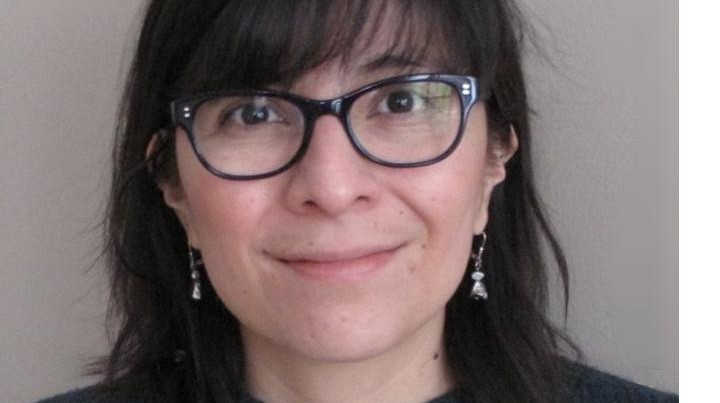EPFL BioE Talks SERIES "Patterning, Waves and Synchronization in Arrays of Cilia"

Event details
| Date | 13.05.2024 |
| Hour | 12:15 › 13:15 |
| Speaker | Prof. Guillermina Ramirez-San-Juan, Living Patterns Laboratory, Institute of Physics, EPFL, Lausanne (CH) |
| Location | Online |
| Category | Conferences - Seminars |
| Event Language | English |
WEEKLY EPFL BIOE TALKS SERIES (sandwiches provided)
Abstract:
Living organisms rely on flows to perform essential functions that range from swimming and feeding in unicellular organisms to mucus clearance in humans. These large-scale flows are generated by the integrated activity of thousands of microscopic beating filaments attached to cell surfaces (cilia). In cells, collections of cilia exhibit highly coordinated temporal patterns known as metachronal waves. While patterns of cilia temporal coordination have been observed for decades, the mechanisms underlying their formation and their contribution to flow generation remain unclear. The lack of measurements of the geometric and dynamic properties of cilia arrays has limited our ability to understand the mechanisms of pattern formation. In my talk I will discuss the advantages of ciliated swimmers as experimental model systems where such measurements can be readily performed. Performing precise measurements and perturbations of temporal patterning in cilia arrays will enable the identification of the physical mechanisms underlying the emergence of collective behavior. Beyond their biological significance, arrays of cilia provide an accessible experimental platform to explore the physics of multi-scale pattern formation.
Bio:
Guillermina Ramirez-San-Juan earned her PhD in Biophysics under the supervision of Margaret Gardel at the University of Chicago. Her work in the Gardel lab focused on understanding how cell migration is guided by the geometry of the extra-cellular environment. Additionally, during her doctoral studies she collaborated closely with the Horne-Badovinac lab to investigate the role of cytoskeletal patterning in organ morphogenesis.
The experience of collaborating across different fields inspired her to become a joint postdoctoral researcher with Wallace Marshall at the University of California, San Francisco and Manu Prakash at Stanford University. There she became interested in combining tools from cell biology and fluid mechanics to study flow generation by ciliary arrays.
Since 2023 she is Tenure-Track Assistant Professor at EPFL in the Institute of Physics (School of Basic Sciences), where she is heading the Living Patterns Laboratory.
Guillermina Ramirez-San-Juan has always been fascinated by the diversity of patterns observed in biological systems, whether they exist at the subcellular, cellular, tissue or organism scales.
When not in the lab she is in the kitchen experimenting with new protocols a.k.a. recipes or running by the nearest lake.
Zoom link (with one-time registration for the whole series) for attending remotely: https://go.epfl.ch/EPFLBioETalks
Instructions for 1st-year Ph.D. students who are under EDBB’s mandatory seminar attendance rule:
IN CASE you cannot attend in-person in the room, please make sure to
Abstract:
Living organisms rely on flows to perform essential functions that range from swimming and feeding in unicellular organisms to mucus clearance in humans. These large-scale flows are generated by the integrated activity of thousands of microscopic beating filaments attached to cell surfaces (cilia). In cells, collections of cilia exhibit highly coordinated temporal patterns known as metachronal waves. While patterns of cilia temporal coordination have been observed for decades, the mechanisms underlying their formation and their contribution to flow generation remain unclear. The lack of measurements of the geometric and dynamic properties of cilia arrays has limited our ability to understand the mechanisms of pattern formation. In my talk I will discuss the advantages of ciliated swimmers as experimental model systems where such measurements can be readily performed. Performing precise measurements and perturbations of temporal patterning in cilia arrays will enable the identification of the physical mechanisms underlying the emergence of collective behavior. Beyond their biological significance, arrays of cilia provide an accessible experimental platform to explore the physics of multi-scale pattern formation.
Bio:
Guillermina Ramirez-San-Juan earned her PhD in Biophysics under the supervision of Margaret Gardel at the University of Chicago. Her work in the Gardel lab focused on understanding how cell migration is guided by the geometry of the extra-cellular environment. Additionally, during her doctoral studies she collaborated closely with the Horne-Badovinac lab to investigate the role of cytoskeletal patterning in organ morphogenesis.
The experience of collaborating across different fields inspired her to become a joint postdoctoral researcher with Wallace Marshall at the University of California, San Francisco and Manu Prakash at Stanford University. There she became interested in combining tools from cell biology and fluid mechanics to study flow generation by ciliary arrays.
Since 2023 she is Tenure-Track Assistant Professor at EPFL in the Institute of Physics (School of Basic Sciences), where she is heading the Living Patterns Laboratory.
Guillermina Ramirez-San-Juan has always been fascinated by the diversity of patterns observed in biological systems, whether they exist at the subcellular, cellular, tissue or organism scales.
When not in the lab she is in the kitchen experimenting with new protocols a.k.a. recipes or running by the nearest lake.
Zoom link (with one-time registration for the whole series) for attending remotely: https://go.epfl.ch/EPFLBioETalks
Instructions for 1st-year Ph.D. students who are under EDBB’s mandatory seminar attendance rule:
IN CASE you cannot attend in-person in the room, please make sure to
- send D. Reinhard a note well ahead of time (ideally before seminar day), informing that you plan to attend the talk online, and, during seminar:
- be signed in on Zoom with a recognizable user name (not any alias making it difficult or impossible to identify you).
Practical information
- Informed public
- Registration required
Organizer
- Prof. Paolo De Los Rios, EPFL
Contact
- Institute of Bioengineering (IBI), Dietrich REINHARD